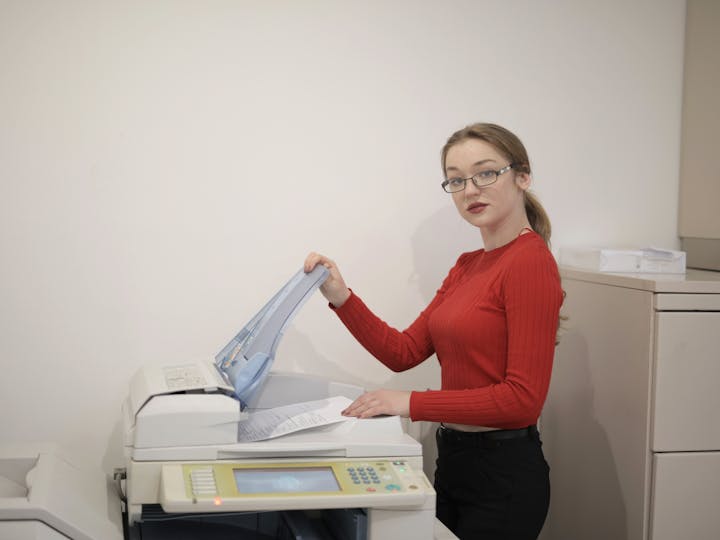Are you a nonprofit looking to maximize the utilization of your budget and also require top-quality printed items for fundraisers, events, or communication with your community?
You’re not alone. Printing can be a budget draining, especially if you must guarantee the highest quality. Fortunately, you can save expenses without reducing the overall effectiveness of your print publications.
In the following section, we’ll explain some useful and generally unnoticed strategies that can help your company save on printing costs. The aim of these strategies is to support your mission by combining the best partnerships, appropriate ideas, and the best paper options, all while staying affordable.
1. Partner with a Printing Company
Building a lasting relationship with a reliable printing company is one of the best ways nonprofits can save money on printing.
Many printing services are willing to offer lower prices to nonprofits, especially once they know you will be ordering often. Rather than ordering flyers, brochures, or event programs separately, having a partnership ensures you can use volume discounts and enjoy no fees for setup or special attention for your projects.
A lot of printing businesses also help nonprofits, as they grasp how unique mission-driven organizations are and work to provide gorgeous, well-designed printing materials with brilliant graphics.
On the whole, a partnership with a printing company allows you to examine ways to reduce the cost without jeopardizing your branding and help you experiment with sizing, format, and materials.
2. Plan Ahead to Avoid Rush Fees
Prices for jobs that need to be printed in the final hours are usually higher. If you hurry an order, you might end up paying more for fast shipping, overnight services, or additional workers.
When you plan all your print requirements for the year and build a production schedule, you reduce your expenses significantly.
When your team knows about upcoming needs for print materials, whether for a fundraising gala, annual report, or community outreach campaign, you can batch orders, choose more affordable shipping options, and allow time to tweak design or specs without penalty.
3. Print in Bulk When Possible
The cost per unit for printed materials decreases substantially when you order in bulk. If you find yourself reordering the same flyers, donation forms, or welcome packets every few months, consider printing a larger quantity upfront.
This approach minimizes setup fees and reduces the frequency of orders, which can save money over time.
However, be mindful of content that may go out of date quickly. For evergreen materials, bulk printing is a no-brainer. For time-sensitive documents, weigh the savings against the risk of having to discard unused copies later.
4. Use Standard Sizes and Paper Types
Custom sizes, finishes, or premium papers can significantly drive up printing costs. Whenever possible, stick to standard sizes like 8.5″ x 11″ for flyers or postcards that match the printer’s default settings. This minimizes waste and setup adjustments, making the job more cost-efficient.
Similarly, opt for paper stocks that are both economical and durable. Many printing services offer recycled paper options that are both affordable and eco-friendly—a bonus for environmentally-conscious nonprofits.
5. Design with Cost in Mind
Your design choices have a direct impact on printing costs.
Full-color prints are more expensive than black-and-white or limited-color designs. Large, full-bleed images can require more ink and paper trimming. Before finalizing a design, talk to your printer about ways to simplify without losing visual appeal.
Consider using templates for recurring materials to streamline the design process and reduce labor hours. There are also plenty of free or low-cost design tools (like Canva for nonprofits) that allow your team to create professional-looking materials in-house.
6. Go Digital When Possible
One of the simplest ways to reduce print costs is to print less. Review your materials and determine what needs to be printed and what can be shared digitally. Annual reports, newsletters, and even event invitations can often be distributed via email or published on your website or social media platforms.
For fundraising campaigns, consider using QR codes on printed materials to drive supporters to a donation page instead of printing multiple versions of response cards or forms. Hybrid approaches—like printing postcards that link to digital content—offer the best of both worlds.
7. Look for Nonprofit Discounts and Grants
Some printing companies, office supply stores, and even online platforms offer nonprofit discounts. Don’t be shy—always ask if there’s a nonprofit rate available. Additionally, look into community foundations or corporate grant programs that provide funds for marketing, outreach, or operational expenses, including printing.
You may also find local small businesses willing to donate or subsidize printing services in exchange for recognition. Building strong community relationships can uncover hidden savings. These might include co-branded materials, shared event sponsorships, cross-promotions, volunteer support, or in-kind contributions that help cut costs.
Take the time to attend local networking events, join business associations, or collaborate on community initiatives. These interactions can open doors to long-term partnerships and mutually beneficial arrangements.
Even a simple coffee meeting with a local business owner can lead to unexpected support. Relationships are key—people are more likely to help causes they feel connected to.
Conclusion
High-quality printing doesn’t have to be a luxury that nonprofits can’t afford.
With the right strategies, like partnering with a reliable printer, planning ahead, making smart design choices, and leveraging discounts, your organization can maintain a professional image without sacrificing your budget.
Every dollar saved on printing is another dollar you can direct toward your mission. So, take a fresh look at your printing process, and start finding ways to make every print count.


